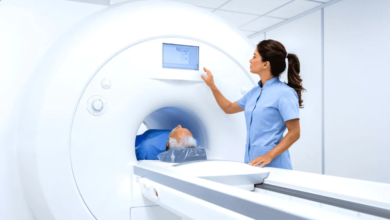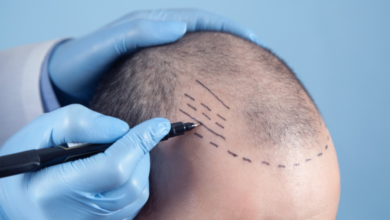Choosing the Right Lipo Specialist: Key Factors to Consider for a Successful Body Contouring Journey

Liposuction, commonly referred to as “lipo,” is one of the most popular cosmetic procedures for body contouring. It allows individuals to target stubborn fat deposits in areas like the abdomen, thighs, hips, and arms, helping to achieve a smoother, more sculpted appearance.
However, the success of the procedure relies not only on the technique used but also on the skill and experience of the lipo specialist. Choosing the best lipo specialist is crucial for achieving the best possible results while minimizing risks and complications.
In this article, we will explore the key factors you should consider when selecting a lipo specialist for your body contouring journey. From assessing their qualifications to understanding your own goals, these considerations will help you make an informed decision and ensure a smooth, successful procedure.
1. Qualifications and Certifications: Ensuring Expertise and Safety
One of the most important steps in choosing a lipo specialist is ensuring that they are properly trained and certified in the field of cosmetic surgery. Liposuction is a surgical procedure that requires precision, knowledge, and experience to perform safely and effectively. A qualified specialist should be board-certified in plastic surgery or a related field.
Key certifications to look for:
- Board Certification: Look for a surgeon who is board-certified by reputable organizations like the American Board of Plastic Surgery (ABPS) or the American Society of Plastic Surgeons (ASPS). These certifications ensure that the surgeon has undergone rigorous training, passed extensive exams, and adheres to high medical standards.
- Specialized Training: Liposuction is a specialized procedure. Ensure that your chosen specialist has received specific training in liposuction techniques, including advanced methods like ultrasound-assisted or laser-assisted liposuction.
- State Licensure: The surgeon should be licensed to practice medicine in the state where they operate. Verify the status of their medical license to confirm they are in good standing with the medical board.
Why it matters:
- A properly trained and certified lipo specialist will reduce the risks of complications and ensure that your procedure is carried out safely.
- Certification by a respected board indicates that the surgeon has met specific standards for both education and experience in their specialty.
2. Experience and Track Record: Proven Success in Liposuction Procedures
Experience is a key factor when selecting a lipo specialist. A highly skilled specialist will have years of experience performing liposuction procedures, which is crucial for achieving the desired results and minimizing risks. It’s important to choose someone who has successfully treated patients with goals similar to yours.
What to look for in terms of experience:
- Number of Procedures Performed: Inquire how many liposuction procedures the specialist has performed. A surgeon who has extensive experience in liposuction will have a greater understanding of the technique, anatomy, and potential complications.
- Variety of Techniques Used: Ask about the types of liposuction techniques the specialist is proficient in, such as traditional suction-assisted liposuction (SAL), ultrasound-assisted liposuction (UAL), or laser-assisted liposuction (SmartLipo). A specialist skilled in multiple methods can offer a tailored approach based on your unique needs.
- Before-and-After Photos: A reputable lipo specialist should have a portfolio of before-and-after photos of previous patients. Reviewing these photos will give you a realistic idea of the results you can expect. Be cautious of specialists who cannot provide these images or seem reluctant to share them.
Why it matters:
- Experienced specialists are better equipped to handle any complications that may arise and will be more confident in delivering the best results.
- A proven track record means you’re more likely to achieve the contouring results you envision.
3. Consultation Process: A Key Step in Building Trust and Understanding
A consultation with the lipo specialist is a crucial step in ensuring you’re making the right choice. During this appointment, you’ll get a sense of the surgeon’s communication style, approach to patient care, and overall professionalism. A good lipo specialist should take the time to understand your goals, assess your body, and discuss realistic outcomes.
What to expect during your consultation:
- Personalized Evaluation: The specialist should assess your body and discuss which areas of fat are suitable for removal through liposuction. They should also consider factors like your skin quality, body shape, and overall health to recommend the best approach.
- Realistic Expectations: A good lipo specialist will provide clear, honest information about what liposuction can and cannot achieve. They should explain the limitations of the procedure and help you set realistic expectations for the outcome.
- Safety and Risks Discussion: Your surgeon should discuss potential risks and complications, such as infection, scarring, or uneven fat removal. A transparent discussion of the procedure’s risks and benefits is essential for making an informed decision.
- Clear Communication: The lipo specialist should make you feel comfortable asking questions and should be willing to provide clear, straightforward answers. They should be able to explain the entire process, from pre-operative care to post-operative instructions.
Why it matters:
- A thorough consultation helps establish trust and ensures that the surgeon understands your aesthetic goals.
- Clear communication helps you feel more comfortable and confident going into the procedure, knowing that your specialist is well-informed and focused on your well-being.
See also: Lawn Care in Mississauga Tips for a Healthy, Green Yard
4. Patient Reviews and Testimonials: Insights from Real Experiences
Patient reviews and testimonials provide valuable insights into the quality of care and results you can expect from a lipo specialist. By reading reviews from individuals who have undergone the same procedure, you can get a sense of the surgeon’s reputation, the quality of their work, and the patient experience.
Where to find reliable patient reviews:
- Online Reviews: Websites like Google, RealSelf, and Healthgrades often feature reviews and ratings for cosmetic surgeons. These platforms allow you to read about other patients’ experiences and results.
- Word-of-Mouth Recommendations: If you have friends or family members who have had liposuction, ask them about their experiences and whether they would recommend their surgeon.
- Patient Testimonials: Many plastic surgery clinics have patient testimonials on their website or social media pages. These can give you a better understanding of the surgeon’s bedside manner and the results they consistently achieve.
What to look for in reviews:
- Consistent Positive Feedback: Look for patterns in reviews, such as patients repeatedly praising the surgeon’s skill, professionalism, and communication.
- Before-and-After Success Stories: Many patients will share their transformation stories, complete with photos. These can be helpful in setting your expectations for results.
- How the Surgeon Handles Complications: Pay attention to how reviews discuss post-surgical care and how the surgeon deals with any complications that may arise. A good specialist will handle any issues swiftly and professionally.
Why it matters:
- Patient reviews offer valuable, real-world insights that can help you gauge the quality and trustworthiness of a lipo specialist.
- Positive feedback and proven results from other patients can provide confidence in your choice.
5. Cost and Financing: Finding a Balance Between Quality and Affordability
While cost should not be the primary factor in choosing a lipo specialist, it is an important consideration. Liposuction is a cosmetic procedure, and prices can vary widely depending on the complexity of the treatment, the specialist’s experience, and the region where you are located.
Factors that influence the cost of liposuction:
- Procedure Complexity: The more areas treated, the higher the cost. A simple liposuction procedure may cost less than a more extensive treatment that targets multiple areas.
- Location: The cost of living in the area can affect pricing. Surgeons in larger cities or high-demand areas may charge more due to higher overhead costs.
- Specialist’s Experience: A more experienced, board-certified surgeon may charge higher fees, but this often reflects their expertise and quality of care.
What to consider when evaluating cost:
- Quality vs. Price: Avoid choosing a surgeon based solely on cost. While it’s important to stay within your budget, the cheapest option may not always offer the best results or the safest experience.
- Financing Options: Many cosmetic surgery clinics offer financing plans or payment options, which can make liposuction more accessible. Be sure to inquire about these options during your consultation.
- Comprehensive Pricing: Ensure that the price quoted includes all aspects of the procedure, such as anesthesia, post-operative care, and follow-up appointments.
Why it matters:
- Finding a balance between cost and quality ensures you get the best value for your investment while achieving the desired results.
- Transparent pricing and financing options help you plan for the procedure without unexpected financial surprises.
Conclusion
Choosing the right lipo specialist is a critical step in ensuring a successful body contouring journey. By focusing on key factors such as qualifications, experience, patient reviews, and realistic expectations, you can make a well-informed decision that leads to optimal results.
Don’t rush the process—take the time to research and consult with multiple specialists, ensuring that you feel confident in your choice. With the right lipo specialist by your side, you can achieve the smooth, sculpted body you’ve always desired, enhancing both your appearance and your self-confidence.



